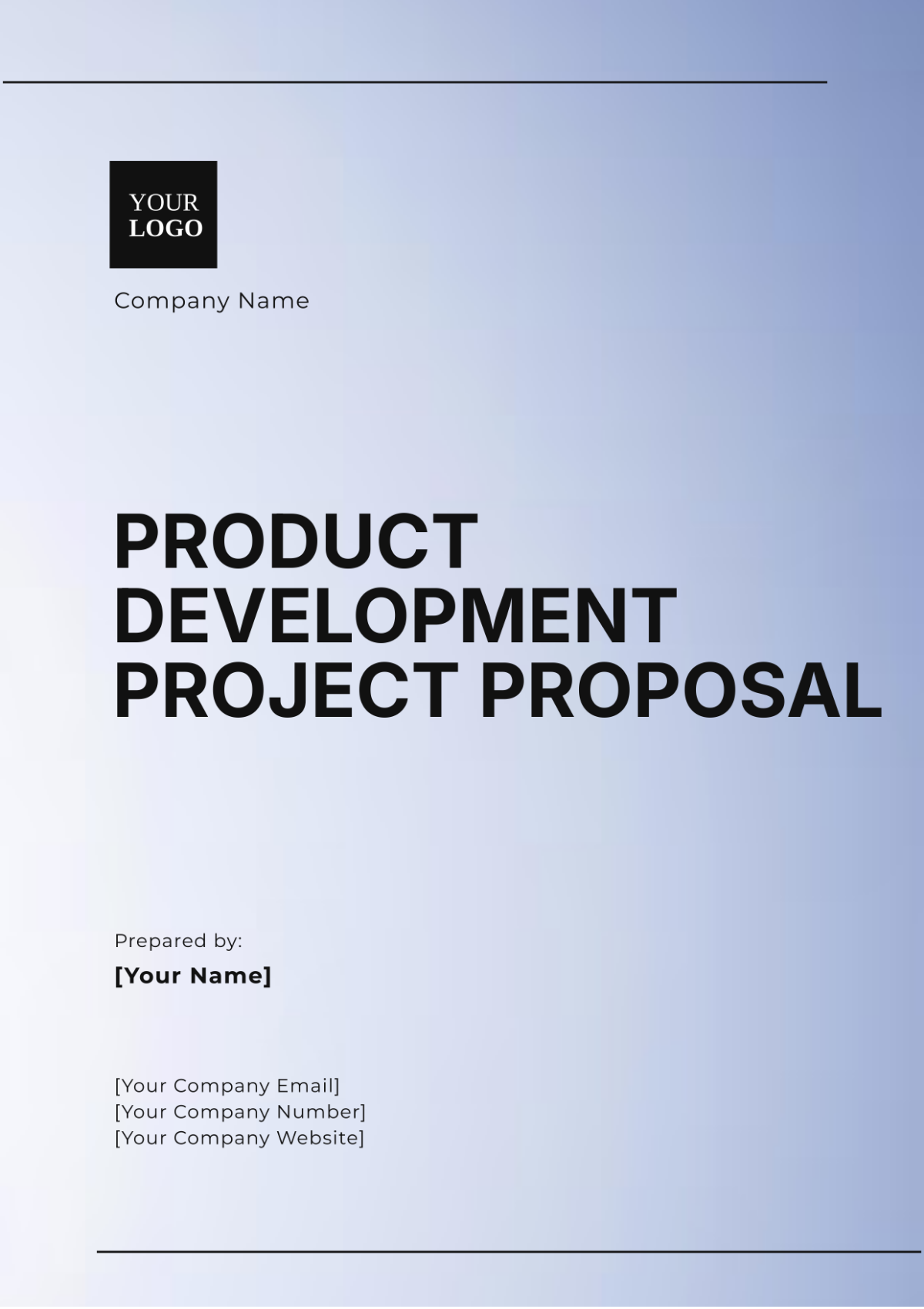Free Product Management Website Proposal

- 100% Customizable, free editor
- Access 1 Million+ Templates, photo’s & graphics
- Download or share as a template
- Click and replace photos, graphics, text, backgrounds
- Resize, crop, AI write & more
- Access advanced editor
Streamline your project planning with the Product Management Website Proposal Template from Template.net. Fully customizable and editable, this professional template helps you craft proposals that stand out. Easily tailor every detail to your needs using our intuitive AI Editor Tool, ensuring a polished and professional presentation every time. Simplify your workflow and impress with ease!
You may also like
- Business Proposal
- Research Proposal
- Proposal Request
- Project Proposal
- Grant Proposal
- Photography Proposal
- Job Proposal
- Budget Proposal
- Marketing Proposal
- Branding Proposal
- Advertising Proposal
- Sales Proposal
- Startup Proposal
- Event Proposal
- Creative Proposal
- Restaurant Proposal
- Blank Proposal
- One Page Proposal
- Proposal Report
- IT Proposal
- Non Profit Proposal
- Training Proposal
- Construction Proposal
- School Proposal
- Cleaning Proposal
- Contract Proposal
- HR Proposal
- Travel Agency Proposal
- Small Business Proposal
- Investment Proposal
- Bid Proposal
- Retail Business Proposal
- Sponsorship Proposal
- Academic Proposal
- Partnership Proposal
- Work Proposal
- Agency Proposal
- University Proposal
- Accounting Proposal
- Real Estate Proposal
- Hotel Proposal
- Product Proposal
- Advertising Agency Proposal
- Development Proposal
- Loan Proposal
- Website Proposal
- Nursing Home Proposal
- Financial Proposal
- Salon Proposal
- Freelancer Proposal
- Funding Proposal
- Work from Home Proposal
- Company Proposal
- Consulting Proposal
- Educational Proposal
- Construction Bid Proposal
- Interior Design Proposal
- New Product Proposal
- Sports Proposal
- Corporate Proposal
- Food Proposal
- Property Proposal
- Maintenance Proposal
- Purchase Proposal
- Rental Proposal
- Recruitment Proposal
- Social Media Proposal
- Travel Proposal
- Trip Proposal
- Software Proposal
- Conference Proposal
- Graphic Design Proposal
- Law Firm Proposal
- Medical Proposal
- Music Proposal
- Pricing Proposal
- SEO Proposal
- Strategy Proposal
- Technical Proposal
- Coaching Proposal
- Ecommerce Proposal
- Fundraising Proposal
- Landscaping Proposal
- Charity Proposal
- Contractor Proposal
- Exhibition Proposal
- Art Proposal
- Mobile Proposal
- Equipment Proposal
- Student Proposal
- Engineering Proposal
- Business Proposal
Product Management Website Proposal
Prepared by: [Your Name]
Company: [Your Company Name]
Date: January 15, 2060
1. Introduction
The purpose of this proposal is to outline the development of a comprehensive Product Management Website. This platform aims to serve as a central hub for product managers, offering tools, resources, and insights to streamline product development processes and enhance collaboration.
2. Goals and Objectives
The primary objectives of the website are:
Provide product managers with tools to plan, track, and manage their workflows.
Host educational content such as blogs, webinars, and templates.
Facilitate collaboration among teams through shared roadmaps and analytics.
Improve decision-making with integrated analytics and reporting tools.
3. Target Audience
The website is designed for:
Primary Audience: Product Managers and their teams.
Secondary Audience: Stakeholders, project managers, and organizational leaders seeking product insights.
4. Scope of Work
The website will include the following features:
Dashboard: Overview of projects, tasks, and analytics.
Resource Library: Access to templates, guides, and case studies.
Collaboration Tools: Shared roadmaps and task management.
Educational Content: Blogs, tutorials, and webinars tailored for product management.
Integration: Compatibility with third-party tools like JIRA, Trello, and Slack.
5. Design and User Experience (UX)
The website will be user-friendly and visually appealing, featuring:
Responsive Design: Ensures optimal functionality on all devices.
Intuitive Navigation: Simplified menu structure and logical content hierarchy.
Interactive Elements: Filters, drag-and-drop functionality, and dynamic charts.
6. Technical Requirements
Frontend: React.js or Angular for a dynamic user interface.
Backend: Node.js or Django for robust server-side functionality.
Database: PostgreSQL or MongoDB for efficient data management.
Hosting: Cloud hosting solutions such as AWS or Azure.
Security: SSL certificates, user authentication, and regular vulnerability assessments.
7. Development Timeline
Phase | Description | Timeframe |
|---|---|---|
Planning | Define project requirements and scope. | 2 weeks |
Design | Develop wireframes and prototypes. | 3 weeks |
Development | Build and integrate all features. | 6 weeks |
Testing | Perform QA and usability testing. | 2 weeks |
Launch | Deploy the website and monitor. | 1 week |
Total Duration: ~14 weeks
8. Budget and Cost Breakdown
Category | Estimated Cost |
|---|---|
Design | $5,000 |
Development | $15,000 |
Testing | $3,000 |
Hosting & Maintenance | $2,000 annually |
Total | $25,000 + $2,000/year |
9. Maintenance and Support
Post-launch, the website will receive:
Monthly updates to features and security.
Dedicated support for troubleshooting and performance optimization.
10. Evaluation and Metrics
The website’s success will be evaluated based on:
Measures of user interaction such as time spent and pages viewed.
Number of active users and registrations.
Feedback collected via surveys and support requests.
11. Conclusion and Next Steps
This proposal outlines a clear roadmap to develop a robust Product Management Website. Upon approval, we will initiate the planning phase and finalize all requirements in collaboration with stakeholders.
Next Steps:
Approval of this proposal.
Scheduling a kick-off meeting to gather detailed inputs.






